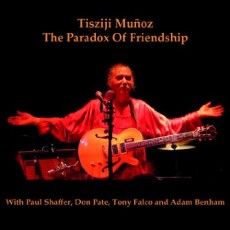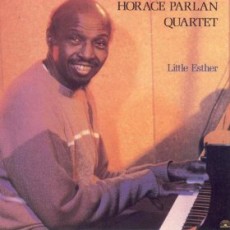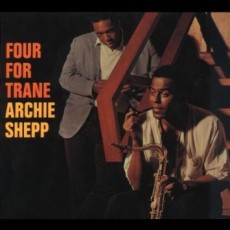
Daily Dose Of Jazz…
Tisziji Muñoz was born July 15, 1946 in Brooklyn, New York. He learned to play guitar as a child using a single-line playing style, due to a childhood wrist injury. Spirit-taught, the avant-garde jazz virtuoso and extreme guitarist is best known for his uniquely original guitar sound and playing style, likened to that of a spiritual tornado.
Tisziji became interested in jazz in 1968 when he was introduced to the music of John Coltrane while enlisted in the US Army 440th General’s Band. Upon discharge he pursued his musical interests in Canada and took a lead role in the development of Toronto’s underground music scene, where he began a long lasting working relationship with pianist Paul Shaffer and performed as guitarist in the musicals Hair and Godspell.
In the mid-70’s, Muñoz returned to New York City and began collaborating and performing with saxophonist Pharoah Sanders followed by projects and releases with Ravi Coltrane, Dave Liebman, Marilyn Crispell, Paul Shaffer, Steve Kuhn, Lam Sobo John Medeski, Bernie Senensky, Chris Caswell, Henry Kaiser, Ra Kalam Bob Moses, Don Pate, John Lockwood, David Finck and the late greats Rashied Ali, Lew Soloff, John Hicks, Nick Brignola and Hilton Ruiz.
Tisziji has performed at the Montreal Jazz Festival, appeared on The late Show with David Letterman, played Carnegie Hall, The Village Vanguard and Gate, Iridium, Dizzy Club coca Cola and Jazz at Lincoln Center among other venues.
An accomplished author, Tisziji has independently published numerous written works encompassing his own Heart-Fire Sound realization and embracing the subjects of spirituality, genius, creativity and time mastery. His books and music have radically transformed the manner in which musicians think and play music, validating the spirit of the genuine creative artist – from the inside out. Avant-garde jazz guitarist continues to compose, record and perform.
More Posts: guitar

Daily Dose Of Jazz…
Massimo de Majo was born in Rome, Italy on July 8, 1957 and began studying music at a very young age. By 1980 while matriculating through Rome University studying Music and Literature he earned a Masters Degree in Percussion Instruments. He went on to study, apprentice and refine his skills under David Liebman, Elvin Jones, Marvin Bugalu Smith, Horace Parlan, Billy Hart, Max Roach, Richie Beirach, Wayne Shorter, Buster Williams, Harold Land, Carlos Santana and Larry Coryell.
He has developed an intense energy flow, wide dynamics and an acute sense for interplay, being comfortable playing free form music, as well as within more structured frameworks. Over the course of his career de Majo has spent most of his life outside Italy performing across Europe, the United States, Scandinavia and Japan. Though not widely known to the general public, the percussionist is regarded as a musicians’ musician and sought after on the jazz circuit.
During the last thirty years, focusing mostly on performing and teaching, he has recorded with Horace Parlan, Per Goldschmidt, Al Swainger, Andy Williamson, Biancamaria Stanzani Ghedini and Philip Clouts, among others. As a composer he has also created pieces for the theatre, contemporary dance, video, sound design and installation art. Drummer Massimo de Majo is also an educator and sits on the faculty of the University of Malta teaching several different courses in the Music Department. He continues to perform and record.
More Posts: drums

Daily Dose Of Jazz…
Vladimir Tarasov was born in Archangelsk, Russia on June 29, 1947. He learned to play the drums in his youth and though chose them as his primary instrument he has transcended performance to become a composer as well. In 1968 at age 21 he moved to Vilnius, Lithuania where he has lived and worked. For many years Tarasov performed with the Lithuanian Symphonic Orchestra and other symphonic, chamber, and jazz orchestras in Lithuania, Europe and the USA.
From 1971 to 1986, Tarasov was a member of the well-known contemporary jazz music trio – GTC with Viatcheslav Ganelin and Vladimir ChekasinHe has recorded over 100 albums and CDs as a soloist, with the trio, as a sideman and with orchestras. He has performed and recorded with Andrew Cyrille, the Rova Saxophone Quartet, Anthony Braxton, Lauren Newton, and Josef Nadj to name a few.
Vladimir has worked and collaborated in the visual artist field with Ilya Kabakov and Sarah Flohr, participating in numerous one-person or group exhibitions around the world. He has composed music for film and theatre on both sides of the Atlantic, has directed a play and opera, and has been an educator and lecturer at universities and music academies in Bremen, Berlin and Dusseldorf – Germany, Stockton and Sacramento – California, and Pont Aven and Orleans, France. He has authored the books Trio and Tam Tam, has received a grant from the Akademie Schloss Solitude in Germany and has been awarded the Triumph Prize in Moscow for the highest achievements in literature and art. Drummer and composer Vladimir Tarasov continues to perform, compose and record.
More Posts: drums

Daily Dose Of Jazz…
ESP-Disk is a New York-based record label, founded in 1964 by lawyer Bernard Stollman. From the beginning, the label’s goal has been to provide its recording artists with complete artistic freedom, unimpeded by any record company interference or commercial expectations—a philosophy summed-up by the ESP motto, printed on every release: “The artists alone decide what you will hear on their ESP-Disk”.
Though it originally existed to release Esperanto-based music, but beginning with its second release, Albert Ayler’s Spiritual Unity, ESP became the most important exponent of what is commonly referred to as free jazz. However ESP also ventured into releasing recordings by non-commercial underground rock acts including The Fugs, The Godz and Pearls Before Swine. Though it suspended releasing records in the 1970s, several new releases by iconic and cutting edge artists have been released by the label, that still exists with nearly its entire catalog available.
A select list of the artists who have recorded for this label include Ornette Coleman – “Town Hall Concert”, Pharaoh Sanders – who made his recording debut on ESP, Sun Ra, Ronnie Boykins, Marion Brown, Sonny Simmons, Paul Bley, Ran Blake, Don Cherry, Giuseppe Logan, Byron Allen, Bob James, Gato Barbieri, Lowell Davidson, Gary Peacock, Frank Wright, Henry Grimes, Noah Howard, Tuli Kupferberg, Karl Berger, MarzetteWatts and Perry Robinson.
Stollman has faced allegations of not paying royalties to the artists or that were signed to unfavorable contracts with low percentage rates from ESP-Disk brought by mostly the underground groups. It is claimed he has committedly stated royalties were his as well as all publishing rights.
The label’s catalog has been licensed frequently over the years, and founder Bernard Stollman has resumed direct responsibility for reissues and for emerging artists.
More Posts: record label

Daily Dose Of Jazz…
Archie Shepp was born on May 24, 1937 in Fort Lauderdale, Florida but was raised in Philadelphia, Pennsylvania. He studied piano, clarinet and alto saxophone before focusing on the tenor saxophone. He studied drama at Goddard College from 1955-59, eventually turning professional.
Shepp played in a Latin jazz band for a short time before joining the band of avant-garde pianist Cecil Taylor. His debut recording as a leader was under his own name, Archie Shepp-Bill Dixon Quartet on the Savoy label. The 1962 session included an Ornette Coleman composition was the initial link to the formation of the New York Contemporary Five, which included Don Cherry. Two years later with the admiration of Coltrane he recorded Four For Trane on Impulse Records with trombonist Roswell Rudd, bassist Reggie Workman and alto John Tchicai.
Archie participated in the sessions for Coltrane’s A Love Supreme in late 1964, but none of the takes were included on the final release but has since been made available on a 2002 reissue. He would cut Ascension with Coltrane in 1965, and his place alongside Coltrane at the forefront of the avant-garde jazz scene was epitomized when the pair split the record New Thing At Newport, the first side a Coltrane set, the second a Shepp set.
During the decade he would develop his political consciousness and Afrocentric orientation, recording albums that reflected. His albums Fire Music and The Magic of Ju-Ju put him at the forefront of the free-form avant-garde movement along with Pharoah Sanders. He continued to experiment into the new decade, at various times with harmonica players and even spoken word poets. Never far from political and social commentary Archie released Attica Blues for the prison riots and The Cry Of My People that spoke to civil rights. He also wrote for theater including The Communist and Lady Day: A Musical Tragedy.
In 1971, Shepp was recruited to the University of Massachusetts Amherst that began a thirty-year career as a professor teaching Revolutionary Concepts in African-American Music and Black Musician in the Theater, also teaching African-American Studies at SUNY in Buffalo, New York.
In the late 1970s and beyond Archie would record blues, ballads, spirituals, tributes to traditional jazz musicians, as well as R&B. He would perform with Sun Ra’s Arkestra, French trumpeter Eric Le Lann, with Michel Herr creating the original score for the film Just Friends. He also appeared on the Red, Hot Organization’s tribute to Fela Kuti titled Red, Hot and Riot.
He has been featured in two documentary films, 1981’s Imagine The Sound, in which he discusses and performs his music and poetry, and Mystery Mr. Ra in which he discusses and performs his music and poetry. Shepp also appears in Mystery, Mr. Ra, a 1984 French documentary about Sun Ra.
In 2004 he founded his own record label, Archieball, together with Monette Berthomier in Paris. Tenor and soprano saxophonist, pianist, vocalist Archie Shepp continues to perform, collaborate and record.


